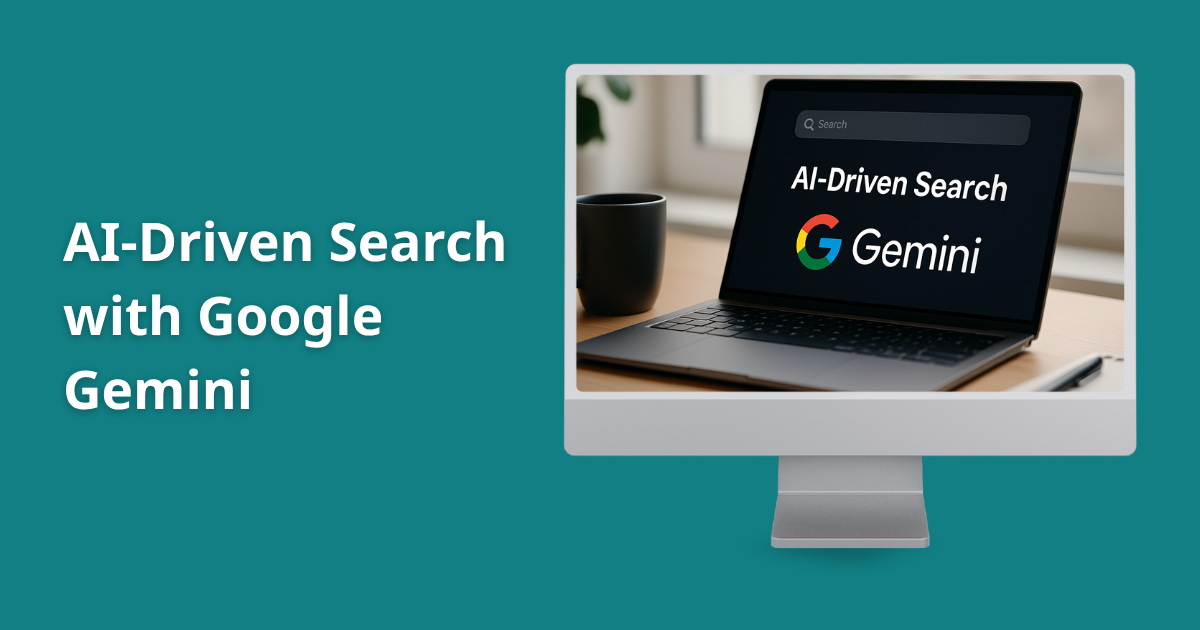Key Takeaways
- Google’s Gemini-powered AI Mode transforms traditional search into a conversational experience with synthesized answers.
- Features like Deep Search and Search Live make search more intuitive and visually dynamic.
- While user experience improves, click-through rates decline, pushing SEO to evolve.
- To stay relevant, focus on depth, structured content, and diversifying your traffic beyond Google.
AI-Driven Search Experiences are no longer just a trend. They’re shaping the future of how we access information. It’s time we create content that’s not only discoverable but indispensable.
Google is transforming how we search online with its new AI-powered features, led by “AI Mode” and the Gemini model. This shift marks a move from traditional, link-based search results to more dynamic, conversational, and intelligent responses that deliver synthesized answers directly in the search interface.
For content creators, marketers, and SEO professionals, it signals both opportunity and disruption.
What Is Google’s AI Mode?
Google’s AI Mode is part of its broader integration of artificial intelligence into the search experience. Instead of simply displaying a list of blue links, AI Mode offers a conversational interface where users can ask questions, follow up with more questions, and receive detailed, human-like responses.
Powered by the Gemini model, this feature mimics a back-and-forth chat with an expert. Whether you’re asking for tips on growing tomatoes or a breakdown of quantum physics, AI Mode attempts to synthesize and summarize the most useful content from across the web into a cohesive answer.
Key Features Powering the Experience
Here are the standout tools enhancing Google’s AI-enhanced search:
- Deep Search
- This tool offers comprehensive answers that go beyond what a single blog post or webpage might provide. It dives deeper into the context of your question and pulls together relevant insights from multiple sources.
- For users, it means less digging and more understanding.
- Search Live
- This feature allows users to search with real-time visual input. For instance, you can snap a photo of a plant, and Search Live will instantly analyze it and provide relevant information.
- It’s particularly helpful for identifying objects, translating signs, or navigating new environments.
Google explains these tools further in their AI overviews guide, where they showcase how Deep Search and Search Live work together. Together, these tools make search feel more like discovery than just data retrieval.
Why This Is a Big Deal for Users
The most noticeable benefit is the sheer convenience. You ask a question, and Google gives you a direct answer—no clicking, no scanning through multiple tabs, and no digging for what you need.
This experience is:
- Faster: Users get answers in seconds without visiting multiple sites.
- More intuitive: The conversation-like flow feels natural and easy.
- Comprehensive: AI pulls from multiple sources to provide richer, well-rounded answers.
This means better accessibility for casual users and more efficient workflows for professionals.
But There’s a Catch. Lower Click-Through Rates (CTR). While users benefit, website owners and marketers might be feeling a pinch. With more answers provided directly in the search results, fewer users are clicking through to actual websites.
This decline in click-through rates (CTR) could significantly affect organic traffic.
Here’s why:
- AI-generated answers reduce the need to click. If the search engine gives users everything they need right on the results page, they’ll have little reason to visit your site.
- Snippets now contain more information than ever. Traditional featured snippets were short summaries. Gemini-powered responses go further—sometimes displaying entire explanations, lists, and data points.
This doesn’t mean SEO is dead, but it does mean it’s evolving.
What This Means for SEO and Content Creators
If fewer users are clicking links, content creators need to think differently. The goal isn’t just to rank anymore—it’s to be part of the answer. That means optimizing for inclusion in AI-generated summaries.
Here’s how you can adapt:
- Focus on clarity and depth
- AI models look for well-structured, clear, and context-rich content. Aim to fully answer user queries within your post.
- Use structured data
- Marking up content with schema.org and other metadata helps AI understand the context and relevance of your content.
- Double down on E-E-A-T (Experience, Expertise, Authoritativeness, Trustworthiness)
- These signals are essential for helping AI and search engines determine which content to prioritize.
- Diversify your traffic sources
- Don’t rely solely on Google. Build your email list, invest in social media content, and explore community-driven platforms like Reddit or LinkedIn.
Conclusion
Is This the Future of Search? In many ways, yes. Search is becoming more about instant knowledge than navigation. For users, that’s a win. For content creators and brands, it means we need to rethink how we add value.
Here are a few future-facing considerations:
- Think in terms of answers, not just articles.
- Create content that can be pulled into AI experiences.
- Embrace multimedia: Video, audio, and visuals may become key parts of how AI explains topics.
The most successful brands and creators will be those who lean into the shift, not fight it.
